Ankle Joint Fixator Video
Ankle Joint Fixator PDF
Ankle Joint Fixator Specification
| Name | NO. | Picture | Unit |
| Tibial And Femur Fracture Ring Fixator | GX301001 | 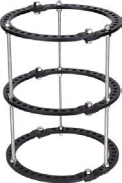 | Set |
| Lower limb lengthening external Fixator | GX301003 | 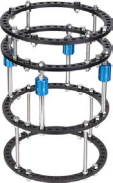 | Set |
| Tibial And Femur Fracture Ring Fixator-l | GX301004 | 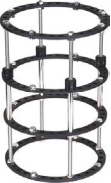 | Set |
| External Elbow Joint Fixator | GX301005 | 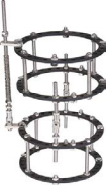 | Set |
| Tibia And Femur Fixation Orthopedics Fixator | GX301006 | 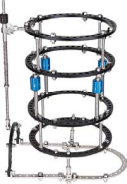 | Set |
| Taylor External Fixator | GX301007 | 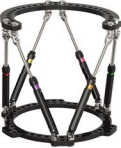 | Set |
| Knee Joint Fixator | GX301008 | 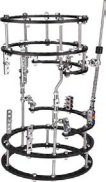 | Set |
| Ankle Joint Fixator | GX301009 | 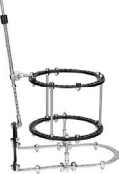 | Set |
Advantages of XC Medico's Products

CNC Preliminary Processing
The computer numerical control technology is used to precisely process orthopedic products. This process has the characteristics of high precision, high efficiency, and repeatability. It can quickly produce customized medical devices that conform to the human anatomical structure and provide patients with personalized treatment plans.
| 
Product Polishing
The purpose of orthopedic products polishing is to improve the contact between the implant and human tissue, reduce stress concentration, and improve the long-term stability of the implant. | 
Quality Inspection
The mechanical properties test of orthopedic products is designed to simulate the stress conditions of human bones, evaluate the load-bearing capacity and durability of implants in the human body, and ensure their safety and reliability. |

Product Package
Orthopedic products are packaged in a sterile room to ensure that the product is encapsulated in a clean, sterile environment to prevent microbial contamination and ensure surgical safety.
|  Product Warehouse Product Warehouse
The storage of orthopedic products requires strict in-and-out management and quality control to ensure product traceability and prevent expiration or wrong shipment. |  Sample Room Sample Room
The sample room is used to store, display and manage various orthopedic products samples for product technology exchanges and training. |
The Process To Cooperate With XC Medico
1. Ask Xc Medico Team For Ankle Joint Fixator Product Catalog.
2. Choose Your Interested Ankle Joint Fixator Product.
3. Ask For A Sample To Test Ankle Joint Fixator.
4.Make An Order Of XC Medico's Ankle Joint Fixator.
5.Become A Dealer Of XC Medico's Ankle Joint Fixator.
The Advantages To Be A Dealer Or Wholesaler Of XC Medico
1.Better Purchase Prices Of Ankle Joint Fixator.
2.100% The Highest Quality Ankle Joint Fixator.
3. Less Ordering Efforts.
4. Price Stability For The Period Of Agreement.
5. Sufficient Ankle Joint Fixator.
6. Quick And Easy Assessment Of XC Medico's Ankle Joint Fixator.
7. A Globally Recognized Brand - XC Medico.
8. Fast Access Time To XC Medico Sales Team.
9. Additional Quality Test By XC Medico Team.
10. Track Your XC Medico Order From Start To Finish.
Ankle Joint Fixator: A Comprehensive Guide
The Ankle Joint Fixator is a groundbreaking external orthopedic device designed to stabilize and support the ankle joint during the healing process. Its application is particularly valuable in cases of complex fractures, ligament injuries, and deformities where traditional internal fixation methods may not suffice. This comprehensive guide delves into the device's features, advantages, and clinical applications, providing a thorough understanding for medical professionals and researchers.
What is Ankle Joint Fixator?
The Ankle Joint Fixator is an external fixation system used to stabilize the ankle joint after fractures, dislocations, or corrective surgeries. This device functions by securing the bones externally through adjustable pins, rods, and clamps, allowing for precise alignment and controlled movement during recovery.
Designed to accommodate the unique anatomy of the ankle, the fixator minimizes soft tissue disruption while ensuring stability. It is particularly effective in treating open fractures, comminuted fractures, and post-traumatic conditions, as well as in cases requiring gradual deformity correction.
Ankle Joint Fixator Features
Adjustable Hinges
Allows for controlled ankle joint mobility during recovery, reducing stiffness and promoting early rehabilitation.
Modular Design
Customizable components enable surgeons to adapt the fixator to specific patient needs and injury types.
Lightweight Materials
Constructed from biocompatible materials such as titanium and carbon fiber for durability and patient comfort.
Multiplanar Stability
Provides rigid fixation across multiple planes to maintain proper alignment and prevent displacement.
Radiolucent Components
Ensures compatibility with imaging techniques like X-rays and CT scans for monitoring bone healing.
Dynamic Adjustability
Allows for postoperative modifications without the need for additional surgeries.
Ankle Joint Fixator Advantages
Minimized Soft Tissue Trauma
External placement avoids unnecessary disruption of surrounding muscles, tendons, and nerves.
Infection Control
Particularly suited for open fractures or wounds, as it eliminates the need for internal hardware at the injury site.
Early Mobilization
Articulating designs enable controlled movement, preventing joint stiffness and enhancing functional recovery.
Customizable Treatment
Surgeons can adjust the fixation construct during recovery to accommodate changes in alignment or joint mobility.
Enhanced Healing Environment
The fixator maintains proper alignment and controlled stress at the fracture site, promoting robust bone regeneration.
Versatility
Applicable for a wide range of injuries, deformities, and post-traumatic conditions affecting the ankle joint.
Ankle Joint Fixator Treatment of Fracture Types
Open Fractures
Stabilizes the joint in cases of exposed bone and significant soft tissue injury, minimizing infection risk.
Comminuted Fractures
Provides stability for complex fractures with multiple fragments, ensuring proper alignment and healing.
Periarticular Fractures
Secures fractures occurring near the joint surface, preserving joint function and alignment.
Post-Traumatic Deformities
Facilitates gradual correction of angular deformities and malalignments caused by trauma.
Ankle Dislocations
Stabilizes the joint following reduction, allowing ligaments to heal and preventing recurrence.
Risks of Ankle Joint Fixator Surgery
Pin Tract Infections
Infection at the pin sites is a common complication, requiring diligent cleaning and monitoring.
Soft Tissue Irritation
The presence of external components may cause discomfort or inflammation around the pin sites.
Joint Stiffness
Prolonged immobilization without controlled motion may lead to reduced range of motion.
Delayed Bone Healing
Inadequate alignment or fixation may result in delayed union or non-union of the fracture.
Mechanical Failures
Rare cases of pin loosening or frame instability may require adjustment or replacement.
Patient Compliance Issues
The bulky and visible nature of the fixator may affect patient adherence to postoperative care instructions.
Ankle Joint Fixator Future Marke
Rising Trauma Incidents
Increasing road accidents and sports injuries are driving demand for advanced orthopedic solutions.
Technological Innovations
Advancements in materials, design, and imaging compatibility are enhancing the functionality and precision of external fixators.
Aging Population
The global rise in elderly populations is contributing to a higher prevalence of fractures and degenerative joint conditions.
Emerging Markets
Expanding healthcare infrastructure in developing countries is increasing access to advanced orthopedic devices.
Minimally Invasive Surgery Trends
Growing preference for less invasive treatments is boosting the adoption of external fixation systems.
Summary
The Ankle Joint Fixator is a transformative device in the field of orthopedic surgery, offering precise stabilization and support for complex ankle injuries and conditions. With its advanced features, customizable design, and numerous advantages, it stands as an indispensable tool for managing challenging cases. While it carries certain risks, careful surgical planning and diligent postoperative care ensure optimal outcomes. As technological advancements and market demand continue to grow, the Ankle Joint Fixator is set to remain a cornerstone of innovative orthopedic treatment, improving patient mobility and quality of life.
Warm reminder: This article is for reference only and cannot replace the doctor's professional advice. If you have any questions, please consult your attending physician.
English
Русский
简体中文
繁體中文
العربية
Français
Español
Português
Deutsch
italiano
日本語
한국어
Nederlands
Tiếng Việt
ไทย
Polski
Türkçe
አማርኛ
ພາສາລາວ
ភាសាខ្មែរ
Bahasa Melayu
ဗမာစာ
தமிழ்
Filipino
Bahasa Indonesia
magyar
Română
Čeština
Монгол
қазақ
Српски
हिन्दी
فارسی
Kiswahili
Slovenčina
Slovenščina
Norsk
Svenska
українська
Ελληνικά
Suomi
Հայերեն
עברית
Latine
Dansk
اردو
Shqip
বাংলা
Hrvatski
Afrikaans
Gaeilge
Eesti keel
Māori
සිංහල
नेपाली
Oʻzbekcha
latviešu
অসমীয়া
Aymara
Azərbaycan dili
Bamanankan
Euskara
Беларуская мова
भोजपुरी
Bosanski
Български
Català
Cebuano
Corsu
ދިވެހި
डोग्रिड ने दी
Esperanto
Eʋegbe
Frysk
Galego
ქართული
guarani
ગુજરાતી
Kreyòl ayisyen
Hausa
ʻŌlelo Hawaiʻi
Hmoob
íslenska
Igbo
Ilocano
Basa Jawa
ಕನ್ನಡ
Kinyarwanda
गोंगेन हें नांव
Krio we dɛn kɔl Krio
Kurdî
Kurdî
Кыргызча
Lingala
Lietuvių
Oluganda
Lëtzebuergesch
Македонски
मैथिली
Malagasy
മലയാളം
Malti
मराठी
ꯃꯦꯇꯥꯏ (ꯃꯅꯤꯄꯨꯔꯤ) ꯴.
Mizo tawng
Chichewa
ଓଡ଼ିଆ
Afaan Oromoo
پښتو
ਪੰਜਾਬੀ
Runasimi
Gagana Samoa
संस्कृत
Gaelo Albannach
Sepeti
Sesotho
chiShona
سنڌي
Soomaali
Basa Sunda
Wikang Tagalog
Тоҷикӣ
Татарча
తెలుగు
ትግንያውያን
Xitsonga
Türkmençe
संस्कृत
ئۇيغۇرچە
Cymraeg
isiXhosa
ייִדיש
Yorùbá
isiZulu
























 Product Warehouse
Product Warehouse Sample Room
Sample Room









